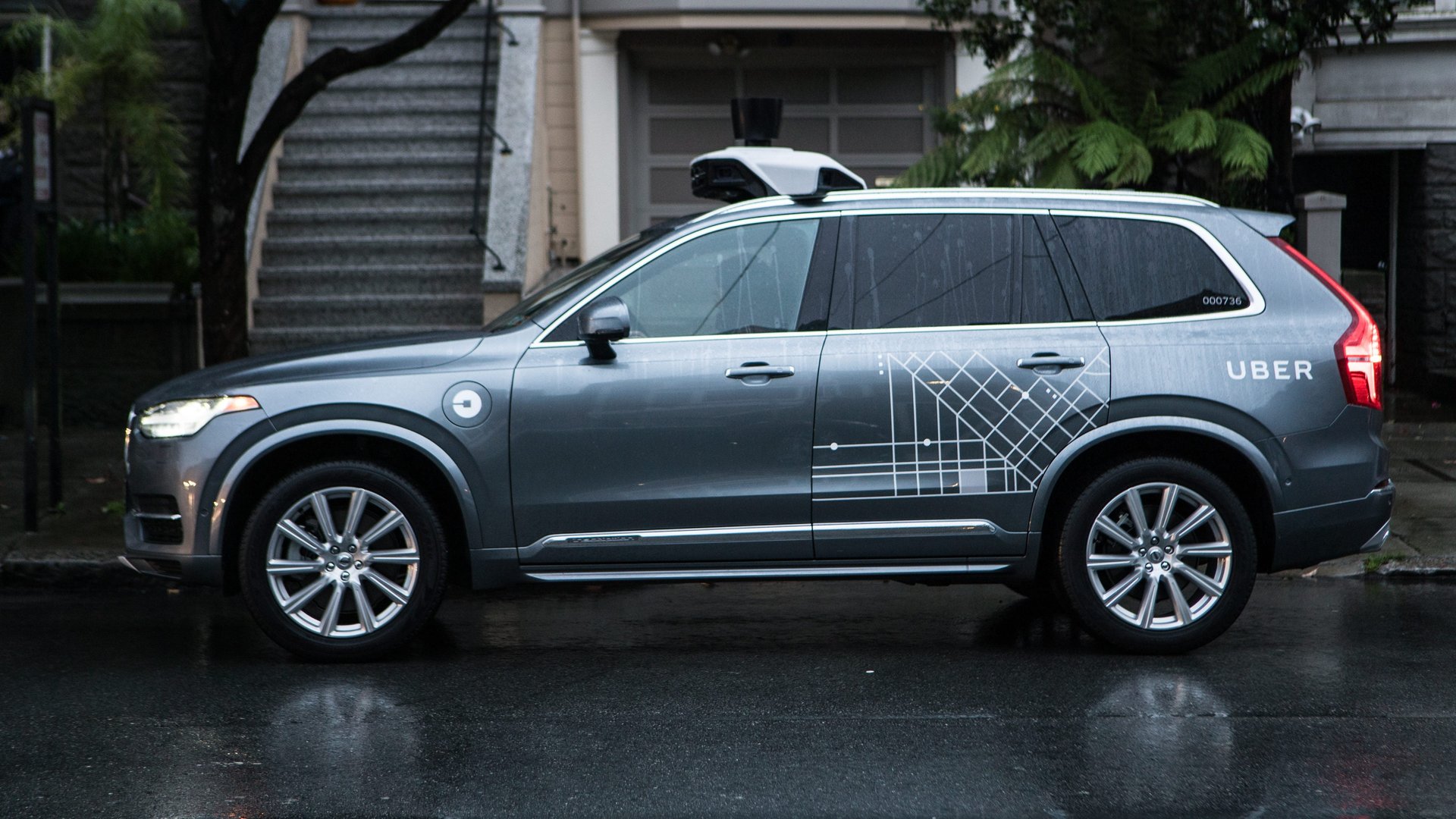Uber is launching self-driving cars in San Francisco the same way it does everything—without permission
No one would have confused the self-driving cars Uber debuted in Pittsburgh in September for regular vehicles. The roof of each Ford Fusion was laden with cameras, sensors, and antennae, plus a small LiDAR (laser radar) unit that hummed softly as it spun. The cars themselves were either black or white, with “UBER” on the front doors and “ADVANCED TECHNOLOGIES CENTER” underneath. Inconspicuous they were not.


No one would have confused the self-driving cars Uber debuted in Pittsburgh in September for regular vehicles. The roof of each Ford Fusion was laden with cameras, sensors, and antennae, plus a small LiDAR (laser radar) unit that hummed softly as it spun. The cars themselves were either black or white, with “UBER” on the front doors and “ADVANCED TECHNOLOGIES CENTER” underneath. Inconspicuous they were not.
The autonomous Volvo SUVs Uber is debuting in San Francisco today are a different story. The cameras and LiDAR units are far more compact, closer in appearance to a ski rack than a pile of high-tech sensors. The cars are gunmetal gray, with a small Uber logo on the front, light geometric patterning on the rear doors, and the company’s name on the trunk. If you weren’t really paying attention, you could almost mistake one for a regular car.
But while the autonomous Ubers may be relatively innocuous to consumers, they will be much less so to California regulators. Uber is treading a fine line with this latest rollout of self-driving technologies. The company has not obtained one of the autonomous vehicle testing permits required by California’s Department of Motor Vehicles to trial self-driving cars on public roads in the state. It’s an outlier in this respect: As of Dec. 8, California’s DMV had issued permits to 20 companies, including Google, Tesla, GM, Ford, and Honda.
Self-driving cars are governed at the state level in the US. In Pittsburgh, Uber is taking advantage of a regulatory void in Pennsylvania, which has yet to enact autonomous-vehicle legislation.
Uber’s initial fleet in San Francisco will consist of ”a small handful of vehicles,” spokeswoman Chelsea Kohler said, declining to be more specific. As in Pittsburgh, the cars will all be monitored by a safety driver and an Uber test engineer. They will be available to users of UberX, the cheapest private ride offered by the platform.
In a post on Uber’s website, Anthony Levandowski, head of the company’s self-driving efforts, explained why it chose to sidestep the DMV. “Before you think, ‘there they go again’ let us take a moment to explain,” he wrote, a wry nod to Uber’s reputation for dodging local laws. “The rules apply to cars that can drive without someone controlling or monitoring them. For us, it’s still early days and our cars are not yet ready to drive without a person monitoring them.”
The California DMV rebuked that logic. The permits exist ”to ensure public safety” as self-driving technology is tested, the DMV said in a statement on Dec. 13. Existing regulations also require companies trialling autonomous cars to notify the DMV of any accidents within 10 business days, and to submit an annual report detailing when humans took over during testing or when self-driving technologies were forced to disengage.
“Twenty manufacturers have already obtained permits to test hundreds of cars on California roads,” the DMV noted. “Uber shall do the same.”